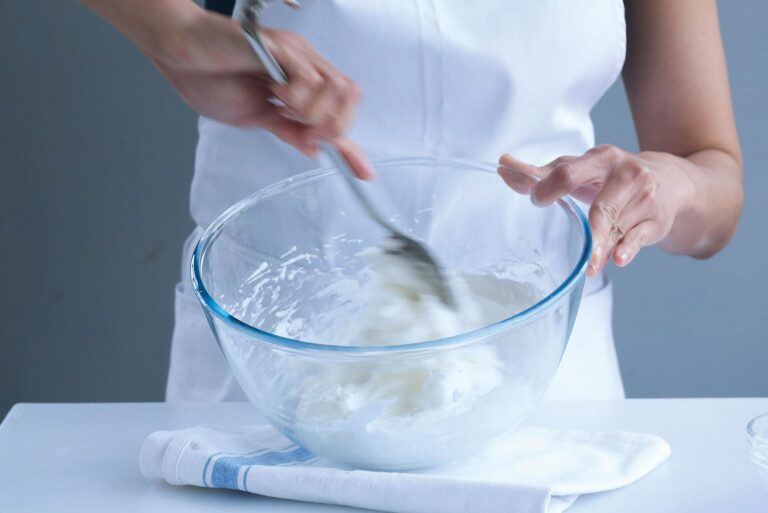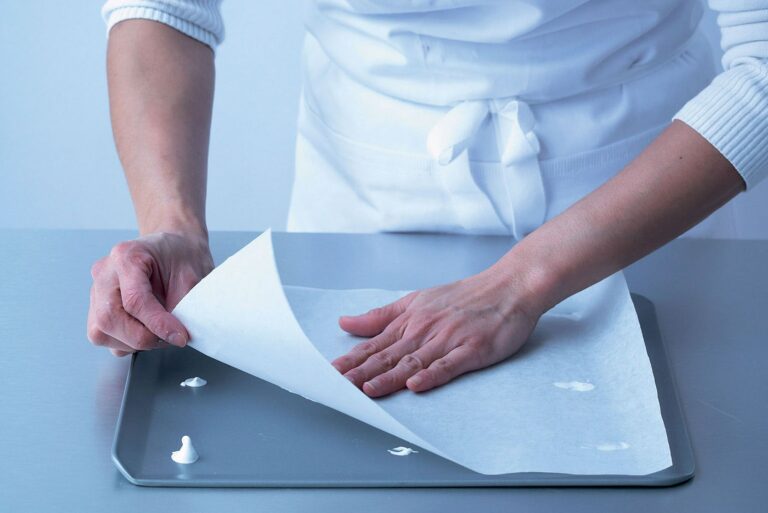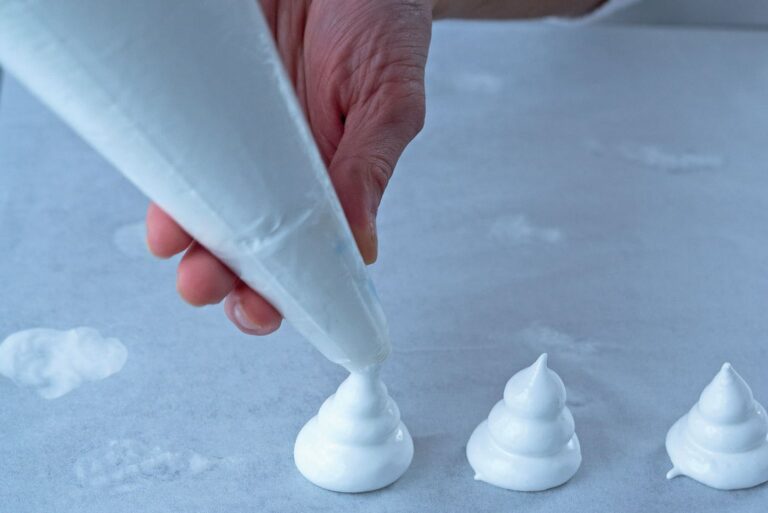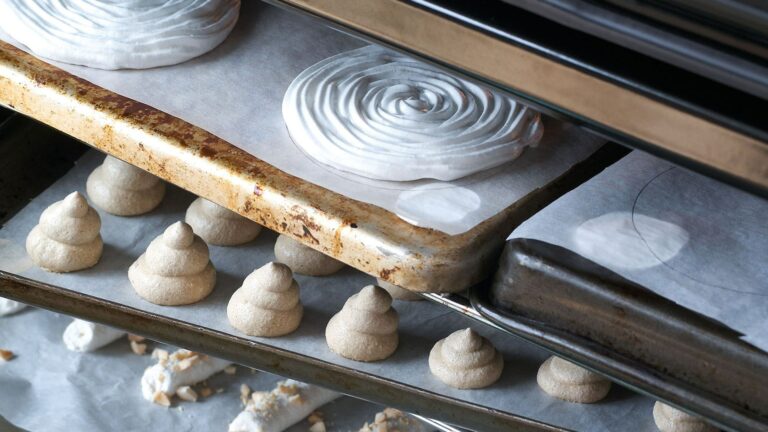Meringues are universally popular and they form the basis of many desserts, from pavlova to Îles flottantes (poached meringues floating in a pool of custard). There are three basic types of meringue: the Swiss meringue, the meringue cuite and Italian meringue. The tutorial below is for the Swiss meringue – the most straightforward and widely used meringue, made by incorporating caster sugar and egg whites.

1. Whisking the egg whites to stiff peaks.

2. Gradually whisking 4 tbsp of the sugar into the whisked egg whites.

3. Carefully folding in the remaining sugar.

4. Fixing the corners of the baking parchment to the baking sheet with little blobs of meringue.

5. Piping beehive shaped meringues.

6. For individual vacherins- piping tight coils to form the meringue layers.
To ensure successful meringues…
For the most accurate measurements, separate the eggs and then weigh the whites. You should then use twice this weight in sugar. Quantities have been given in the recipes using medium eggs.
It is important to use non-stick baking parchment for all meringues, as they can then be left to cool on the parchment without sticking. Generally, you can tell meringues are cooked when the parchment can easily be released from the meringue. Do not use greaseproof paper, as meringues stick fast to it and have to be chipped off.
Although meringues are very sweet, cream served with meringues is best sweetened with icing sugar, as the contrast if it is plain can make the cream taste almost savoury.
Ingredients
Makes about 20
4 egg whites
200g caster sugar
350ml double cream
2 tbsp icing sugar
Instructions
- Heat the oven to 120°C. Line 2 baking sheets with non-stick baking parchment. In a medium to large bowl, whisk the egg whites to stiff peaks, using an electric whisk.
- With the beaters still running, whisk in 4 tablespoons of the caster sugar, sprinkling 1 tablespoon in at a time and whisking the meringue back to stiff peaks again between each addition.
- Fold in the remaining sugar using a large metal spoon, until just incorporated. Once you are confident with the method, the remaining sugar can be whisked in gradually.
- Fill a piping bag with the mixture. Use a little of the mixture to anchor the corners of the baking parchment to the tray.
- Make beehive-shaped meringues by piping 3 squeezes of the piping bag on top of each other, each layer smaller than the one before.
- Bake in the oven for 1½–2 hours, or until the meringues will lift off the parchment cleanly and have completely dried out. Remove from the oven and leave to cool completely.
- In a large bowl, combine the cream with 1 tablespoon of the icing sugar and whip using a balloon whisk or a hand-held electric whisk until it just holds its shape. It is very easy to over-whip cream, so take care. Use the cream to sandwich the meringues together. Serve piled on a plate, dusted with the remaining icing sugar.
Variations…
Individual vacherins with chestnut filling: Pipe the meringue mixture into tight 10 cm diameter coils. Cook as above and sandwich together with sweetened cream mixed with 1–2 tablespoons sweetened chestnut purée.
Îles flottantes: Whisk 2 teaspoons cornflour into the meringue mixture after all the sugar has been added, then poach quenelles of the mixture in a mixture of milk and water for about 2 minutes each side. Serve on a pool of crème anglaise made with half milk and half double cream. This can be served drizzled with hot caramel.
